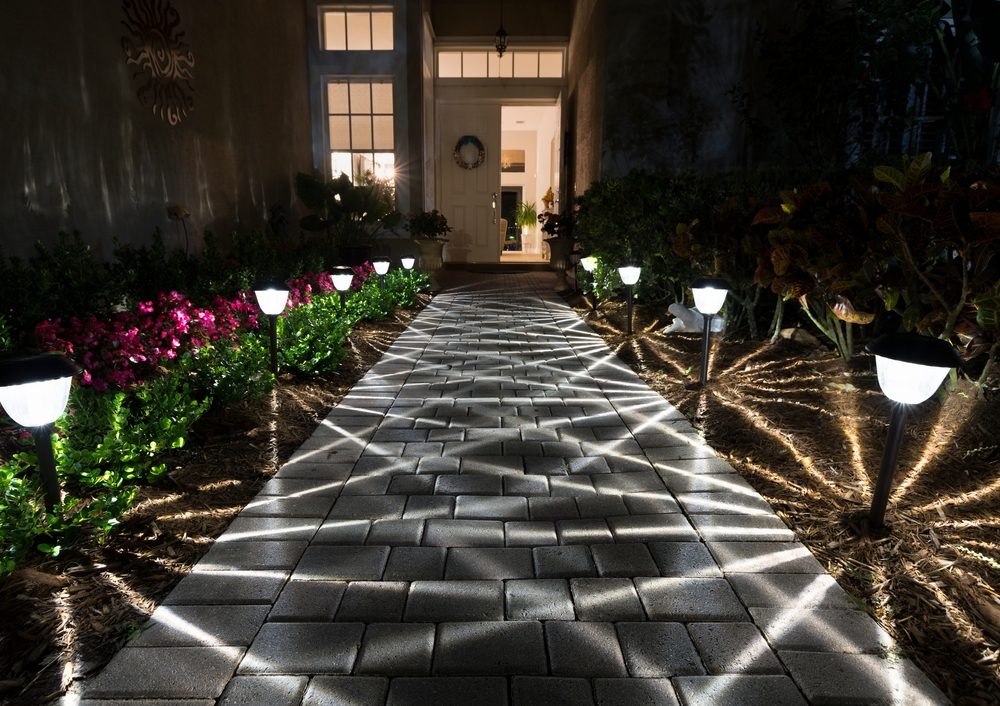How To Pick The Right Lighting

Outdoor lighting does more than illuminate your backyard or front porch—it transforms how your home is experienced after dark. The right lighting for your home’s exterior can increase security, create ambiance, highlight architectural features, and extend the usability of your outdoor spaces well into the evening. Yet, many homeowners struggle with how to select your new lighting for your home’s exterior in a way that balances practicality, aesthetics, and efficiency.
Whether you’re installing pathway lights, uplighting trees, or upgrading your porch fixtures, making the right decisions can feel overwhelming. Is there such a thing as wrong lighting for your home outdoors? Absolutely—and missteps can lead to harsh glares, light pollution, or wasted energy. This guide will help you plan, choose, and implement outdoor lighting that enhances both beauty and function, while keeping your space safe and inviting.
The Importance of Outdoor Lighting Design
When people think about lighting their home, they often focus on interiors. But outdoor lighting plays a crucial role in curb appeal, security, and your enjoyment of outdoor areas. It adds dimension and drama to landscaping, allows you to entertain after dark, and increases your home’s resale value.
Think of lighting as a layer of design that brings out your home’s nighttime personality. A well-lit façade creates a warm welcome, while a softly illuminated backyard encourages relaxation and connection. Beyond aesthetics, it enhances safety by illuminating pathways, stairs, driveways, and entrances—critical areas for preventing trips and deterring intruders.
Before choosing fixtures or placing orders, take a walk around your property at dusk and after dark. Notice the dark spots, the overly lit ones, and areas where light would enhance safety or highlight features. This site-specific evaluation is essential to understanding what to know before updating your home lighting outside.
How to Select Your New Lighting for Your Home’s Exterior
A thoughtful outdoor lighting plan usually includes a combination of four major lighting types: ambient, task, accent, and security lighting.
Ambient lighting provides overall illumination for patios, decks, or porches. Fixtures like overhead string lights, post lights, or wall-mounted lanterns offer gentle brightness that makes a space feel usable without being harsh. When choosing these, consider the size of the area and the amount of natural moonlight or nearby street lighting.
Task lighting focuses on specific functional areas like stairways, outdoor kitchens, and entry doors. Floodlights, step lights, and pendant lights near outdoor counters help you safely perform tasks after dark. This type of lighting should be bright enough to reduce shadows, but still soft enough to avoid glare or eye strain.
Accent lighting adds visual interest by highlighting architectural details, trees, water features, or garden beds. Spotlights, uplights, and even solar-powered stake lights can make features pop. Accent lights are best used sparingly to avoid overwhelming the landscape—less is often more.
Security lighting, on the other hand, is focused on safety. Motion-sensor floodlights near garages, entry points, or dark corners of your yard help deter unwanted visitors and increase your sense of protection. When possible, combine this lighting with smart systems that allow for remote control or automation based on movement or schedule.
One of the best things about outdoor lighting today is the wide availability of energy-efficient LED options. LEDs are long-lasting, weather-resistant, and available in a variety of color temperatures. Choose warm white (2700K to 3000K) for most applications to create a welcoming glow, and reserve cooler whites (4000K+) for task-heavy areas like driveways or garages.
What to Know Before Updating Your Home Lighting Outdoors
Before diving into fixture styles or bulb types, it’s critical to plan with purpose. What do you want your outdoor lighting to achieve? Is your goal to increase security, create ambiance, boost curb appeal, or all of the above? Knowing this will guide every other decision.
Power source is a primary consideration. Do you want to hardwire your lights into your home’s electrical system? Or do you prefer solar-powered or battery-operated fixtures? Wired lighting is more reliable but requires professional installation, while solar is eco-friendly and easy to install—but only effective with adequate sunlight exposure.
Durability is another factor. Outdoor lights face wind, rain, snow, UV rays, and insects. Look for fixtures rated for wet or damp locations, depending on their exposure. Solid brass, copper, or powder-coated aluminum are great choices for weather resistance.
Think also about lighting control. Timers, motion sensors, and smart switches can help conserve energy and extend the lifespan of your bulbs. They also offer convenience—imagine your porch light turning on automatically at sunset or your garden lights dimming at a set time to signal bedtime.
And don’t forget placement. One of the most common outdoor lighting mistakes is installing fixtures too high or low, which can distort the light’s effect. Lights placed too high can create harsh shadows, while lights placed too low may lose their impact. Install pathway lights about 14 inches off the ground, wall sconces at eye level, and accent lights at a slight upward angle for the best effect.
Is There Such a Thing as Wrong Lighting for Your Home’s Exterior?
Yes, and it’s more common than most people think. A poorly executed lighting plan can make your home look harsh, overexposed, or visually confusing. One of the biggest mistakes is using lighting that’s too bright. While it may seem like more light equals more safety, overly bright lights can actually cause glare, create deep shadows, and make your home less inviting.
Mismatched color temperatures are another major issue. When your front yard is lit with a soft warm glow and your backyard glows cold and blue, it creates visual disharmony. Keep a consistent color palette of warm white light to maintain continuity and harmony across your property.
Improper beam spread is another common problem. Floodlights that illuminate too wide can create light pollution, while those too narrow leave gaps. Use wide-beam lights for large areas and narrow beams for specific features.
Another form of “wrong lighting” is poorly shielded or directed fixtures. When lights are aimed directly into the sky or your neighbor’s window, it creates a nuisance and wastes energy. Always aim lights down or toward the feature you’re trying to illuminate. Look for full cut-off fixtures, which direct light downward and minimize light trespass.
Finally, ignoring zoning or HOA rules can be a costly mistake. Some communities restrict certain types of outdoor lighting or require permits. Always check local regulations before starting your project.
Creating Atmosphere with Outdoor Lighting
While function is essential, don’t underestimate the power of mood. Outdoor lighting can create stunning atmospheres that feel serene, magical, or festive, depending on how you use it. The best lighting plans balance brightness with softness, contrast with consistency, and utility with personality.
In gathering areas like patios and decks, string lights offer warmth and charm, creating a cozy ambiance perfect for entertaining. Lanterns or candles on tables add layers of intimacy. On walkways, staggered path lights guide guests while showcasing your landscaping. Around pools or water features, underwater lights or soft accent lighting add elegance and drama.
Want to highlight your home’s architecture? Use uplights at the base of columns, archways, or textured walls. For a more natural look, moonlighting—placing a soft light high in a tree to mimic moonlight—adds depth and a subtle, enchanted glow.
Smart lighting can take your ambiance even further. Set color-changing LEDs to match the season—warm golds and reds in fall, icy blues in winter, soft greens in spring. Create customized scenes, like “garden party,” “date night,” or “security mode,” that can be activated with a tap or voice command.
Conclusion
Ultimately, the right lighting for your home’s exterior should enhance how you live outdoors. It should invite, protect, inspire, and reflect your unique taste. When thoughtfully chosen and properly installed, outdoor lighting doesn’t just illuminate your yard—it extends your living space, makes your home more secure, and provides a sense of welcome to all who visit.
So, if you’re standing at the edge of your patio wondering how to select your new lighting for your home outdoors, remember this: great lighting isn’t about brightness. It’s about intention. Start with a purpose, plan with care, and let light guide the way to your ideal outdoor environment.
Need Outdoor Lighting Services Near You?
Here at East Texas Outdoor Lighting Solutions, we’re passionate about enhancing the beauty and safety of your property with expert outdoor lighting services. Whether you’re looking for custom landscape lighting, year-round Trimlight installations, or dazzling holiday displays, we have the perfect solution for you. Our team is committed to providing high-quality, energy-efficient designs tailored to your needs. Based in Frankston, TX, we proudly serve the entire East Texas area. Reach out today for a free consultation, and let us help you brighten up your space!
